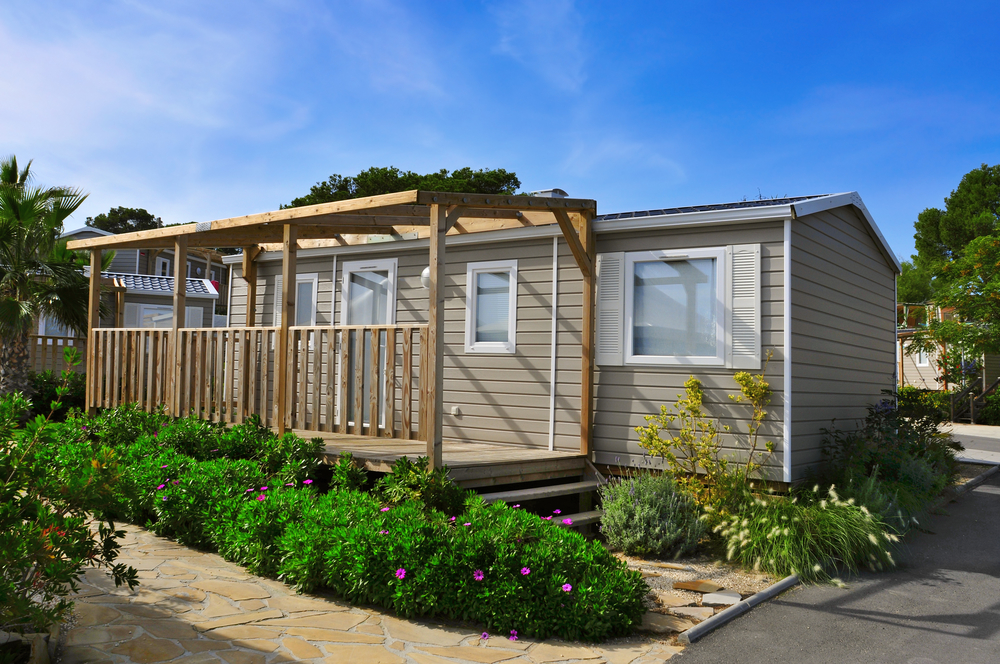Who said serious storms only hit during the wintertime? The famous unpredictability of the British weather means that they can strike at just about any time of the year.
Storms – with the accompanying flood warnings – were forecast across the whole of the country by the Met Office in what is lovingly called “flaming” June – according to a story in the Express newspaper on the 25th of June 2021. As the summer wears on, the risks of thunderstorms and lightning strikes are likely to increase, and this is a time when your static caravan may be most at risk of loss or damage.
Naturally, come the winter, more serious storms can be expected as a matter of course.
And these patterns of extreme weather are likely to raise particular concern if you are the owner of a static caravan. The very nature of a caravan – its method of construction and the fact that many are sited on exposed coastal or rural parks – leave them especially vulnerable to loss and damage when the wind begins to howl and the rain lashes down.
Static caravan insurance
Protection for your static caravan against the financial losses you may face as a result of damage to your static caravan during any storm is available from us here at Cover4Caravans, where you can rest assured that you are suitably indemnified against any such losses or damage.
In return for that reassurance – and in common with any other type of insurance – you will be expected to take reasonable precautions to mitigate the cost and effects of any loss or damage.
These are the largely common-sense measures that your static caravan insurance provider is entitled to expect of you. If you don’t, any loss or damage may be attributed to your contributory negligence, and the value of any insurance settlement reduced accordingly.
Our guide to static homes
We have published a detailed guide to static homes – including your responsibilities as the owner, particular considerations if you are going to let it to others, and the importance of static caravan insurance.
Our guide contains essential information about your obligations and some general tips on safety, but what specific measures is it prudent to take as a precaution against loss or damage from storms?
Your caravan site
Clearly, some static caravan sites are more vulnerable to the effects of storms than others.
Even on a relatively sheltered site, however, there may be trees, bushes or structures which may give you cause for concern because of their proximity to your pitch.
If that is the case, make sure to put your concerns and reservations in writing to the site management – and your awareness of the potential for problems might count in your favour if you subsequently need to make an insurance claim.
Remember too, advice published by the Royal Society for the Prevention of Accidents (RoSPA) that trees may act as lightning conductors during a thunderstorm and, so, pose great danger for anyone sheltering under them.
Your static caravan
Taking reasonable steps to safeguard your static home during stormy weather is your responsibility and there are a number of straightforward and common sense precautions you might want to make a point of taking.
Depending on the pitch you have chosen, for instance, your site might insist that your static home is securely anchored – if that is a requirement, you clearly need to make sure that anchor points are secure and may want to consider the benefits of anchoring your holiday home anyway.
As bad weather warnings are given or there is some prospect of gathering storms on the horizon, it is time to pay attention to the details:
- as any storm approaches, make sure that all windows and doors are securely closed, to prevent damage caused by frames and units rattling about, suggests the National Association of Caravan Owners (NACO);
- when the winds pick up, damage may be caused by windows and doors rattling against their frames, so make sure that they are securely closed – both when you are away from the caravan and inside it;
- for similar reasons, and because they are in probably the most exposed area of the caravan, make sure that skylights are also securely closed;
- aerials and aerial brackets are likely to be similarly exposed and the fittings need to be thoroughly checked;
- because of the danger of any aerial acting as a lightning conductor, you might want to consider taking it down if severe thunderstorms are forecast or throughout the winter months when your caravan is not in use;
- other fittings to check – both before and after any stormy weather – are gutters and downpipes, which may need to be re-secured and possibly unblocked;
- outside, in and around your plot, make sure that everything is stable and secure – sheds, outbuildings, gas bottles, decking or verandas, garden furniture and storage boxes;
- these are all structures and items which might not only suffer damage but from which pieces might be blown off during the storm and impact neighbouring static homes – for which you may face liability and the impact of still further insurance claims;
- to help prevent this happening, of course, any loose items need to be put away in a storage shed or box or brought inside your caravan, whilst you weather the storm.
- at the onset of winter, or if storms and severe weather are expected, thoroughly inspect the area surrounding the pitch on which your static caravan is berthed;
- make a note of any dangerously overhanging or dead tree branches and raise the problem with the park management, preferably in writing, so that appropriate action is taken;
- pre-storm checks also need to be made on the condition and integrity of fencing, verandas, decking, and skirting, to ensure that it is strong enough and sufficiently secure to withstand the onslaught of high winds, rain and even flooding;
- check that gutters and drainpipes are unblocked and securely in place and gas bottles safely stowed; and
- if you are going to be away for any length of time, you might want to arrange a visit from time to time to check that everything remains safe, secure, and ready for the worst that the elements may throw at your static home.
Storms can wreak havoc with your static home and can spring up at practically any time of the year. Regular checks and a shortlist of common sense precautions may help to mitigate the risks – putting the mind of your static caravan insurance company at ease and saving many a dent in your own pocket.
These are largely straightforward, common sense precautions, but you also need to take particular note of any specific measures your insurer requires to be taken. If you are unsure as to what your obligations are, speak to your broker or insurer for clarification.


